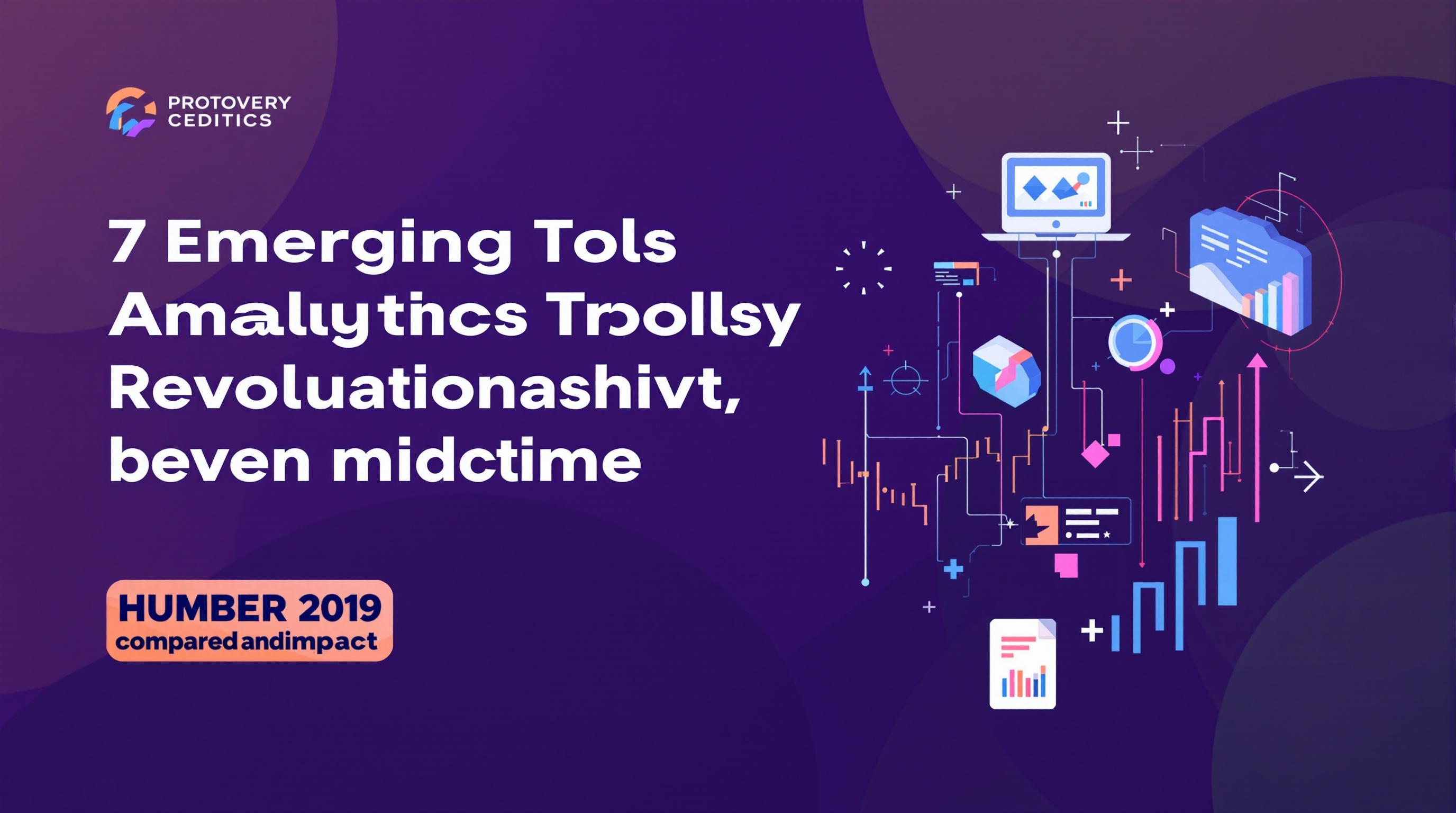Related Articles
- 5 Innovative B2B SaaS Platforms Launched Recently That Are Changing How Companies Slash Churn Rates
- Unpacking the Psychological Triggers That Make SaaS Newbies Stick Around Longer Than Expected
- 7 Emerging B2B SaaS Tools Revolutionizing Customer Retention Strategies in the Last Five Years
- Top 6 Cutting-Edge Analytics Platforms Transforming Predictive Insights in the Last Five Years
- 7 Innovative SaaS Onboarding Tools Released Since 2019 That Redefine User Engagement and Success
- Top 6 Emerging Workflow Automation Tools Transforming Hybrid Workplaces in the Last Five Years
12 Essential Analytics Tools to Revolutionize Your Unseen Data Tracking Strategy
12 Essential Analytics Tools to Revolutionize Your Unseen Data Tracking Strategy
12 Essential Analytics Tools to Revolutionize Your Unseen Data Tracking Strategy
1. Google Analytics
Google Analytics remains one of the most popular and versatile analytics platforms for tracking website traffic and user behavior. Its extensive features offer deep insights into visitor demographics, acquisition channels, and user interactions.
One of the key strengths of Google Analytics is its real-time reporting, which allows businesses to monitor ongoing campaigns and make immediate adjustments. Additionally, the integration with Google Ads and other Google products enhances its tracking capabilities.
For businesses looking to uncover unseen data, Google Analytics' advanced segments and custom dimensions enable detailed exploration of user behavior patterns. According to a report by Databox, over 70% of companies use Google Analytics as their primary analytics tool.
2. Hotjar
Hotjar focuses on user experience and behavior through heatmaps, session recordings, and surveys. This tool highlights how users navigate your website visually, unveiling unseen data about user engagement and friction points.
By capturing mouse movements, clicks, and scroll data, Hotjar helps identify exactly where visitors lose interest or get confused. These insights are valuable for optimizing site design and improving conversion rates.
Combining Hotjar with traditional analytics tools provides a qualitative dimension to data analysis. According to UX Magazine, Hotjar’s heatmaps can increase understanding of user intent by an average of 40%.
3. Mixpanel
Mixpanel is a powerful tool tailored for product analytics. It focuses on tracking user actions rather than simply page views, making it invaluable for SaaS companies and mobile apps.
With its event-based tracking system, Mixpanel uncovers deep insights into feature usage, retention rates, and conversion funnels. This visibility into user behavior helps drive data-driven product decisions.
Companies using Mixpanel can segment users by behavior and tweak experiences in real-time to increase engagement. A recent study by G2 highlights Mixpanel as a leader in product analytics with high user satisfaction.
4. Tableau
Tableau is a robust data visualization tool that helps transform complex data into easy-to-understand dashboards and reports. It excels at uncovering hidden trends and correlations within large datasets.
Tableau supports the integration of various data sources, including databases, spreadsheets, and cloud applications, centralizing unseen data for comprehensive analysis. Its drag-and-drop interface makes it accessible for non-technical users.
Organizations leveraging Tableau have significantly improved their decision-making processes. According to Forrester, companies using Tableau see an average 12% increase in operational efficiency.
5. Adobe Analytics
Adobe Analytics provides enterprise-level analytics capabilities with advanced segmentation, predictive analytics, and real-time data processing. It’s ideal for organizations needing detailed insights at scale.
This tool covers a wide array of data touchpoints, from web and mobile to CRM platforms, allowing businesses to uncover unseen customer journeys and behaviors across multiple channels.
Adobe’s suite also integrates well with its marketing cloud, enabling automation and personalized marketing strategies. Gartner ranks Adobe Analytics as a leader in digital experience analytics.
6. Crazy Egg
Crazy Egg offers website heatmaps, scrollmaps, and A/B testing tools to reveal visitor engagement metrics that traditional analytics may miss. It provides actionable insights on how to enhance site usability.
The visual reports help in spotting bottlenecks and opportunities for improving user experience, boosting conversion rates by focusing on what users actually do rather than what they say.
Its simple setup and clear visualizations make Crazy Egg a favorite for small to mid-size businesses. ConversionXL reports that Crazy Egg can increase conversion rates by up to 20% with data-backed changes.
7. Kissmetrics
Kissmetrics specializes in behavioral analytics tailored to e-commerce and SaaS businesses. It tracks individual user interactions through the sales funnel, providing insights into lifecycle metrics.
By analyzing cohort retention and customer lifetime value, Kissmetrics helps marketers identify hidden patterns that influence customer churn and loyalty. This helps shape targeted retention strategies.
According to a case study by Kissmetrics, companies have seen up to 30% improvement in user retention by leveraging their conversion funnel analytics.
8. SEMrush
SEMrush is primarily known as a comprehensive SEO tool, but it also offers powerful analytics features for competitive research and keyword tracking. It reveals data about organic search performance and competitor strategies.
Unseen data about search trends and backlinks allow companies to optimize content campaigns and monitor their digital footprint. SEMrush’s extensive database is updated regularly to ensure accuracy.
A study by Ahrefs notes that SEMrush’s competitive domain analysis helps marketers uncover opportunities that increase organic traffic by an average of 18%.
9. Piwik PRO
Piwik PRO is an analytics platform emphasizing data privacy and security, complying with regulations like GDPR. It offers enterprise-level tagging, analytics, and data management.
This tool allows organizations to collect and analyze unseen data while maintaining user trust through privacy-compliant tracking. It supports on-premises and cloud setups tailored for sensitive data environments.
Many public sector organizations and healthcare providers use Piwik PRO as their trusted analytics platform. According to Piwik PRO's official site, the platform emphasizes analytics without compromising privacy.
10. Looker
Looker is a modern data platform designed to model, analyze, and visualize data in real-time. It puts unseen data at the forefront by integrating multiple data sources into a single source of truth.
With its LookML modeling language, Looker enables teams to create custom metrics and reports tailored to specific business questions. This facilitates data democratization across the organization.
Enterprises using Looker report increased collaboration between analytics and business teams. According to a Forbes Insights survey, companies leveraging Looker improve their data-driven decision-making significantly.

